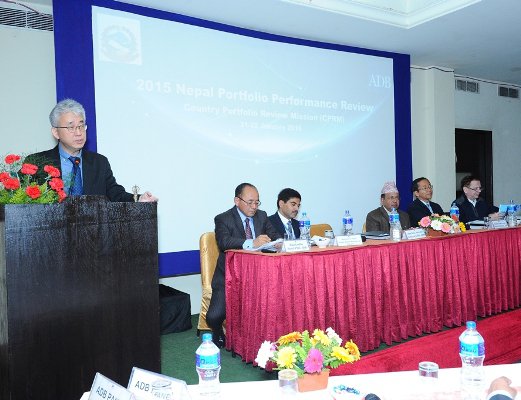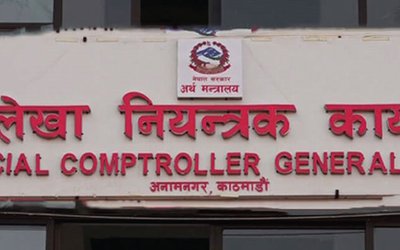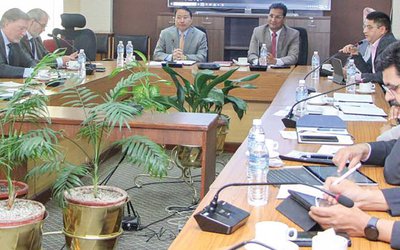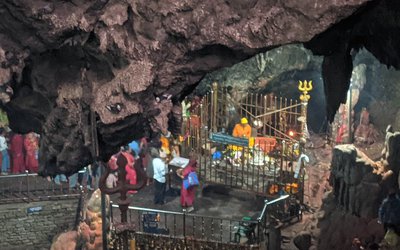
It has been five months since the catastrophic 7.8 magnitude earthquake that struck Nepal on 25 April, followed by several powerful aftershocks that shook a large part of the country, particularly the central and western administrative regions.
The calamity has added a new challenge to Nepal’s short-to-medium term economic and development prospects. The downside risks have been compounded recently by political strikes in various parts of the country. The political strikes prior to and after the promulgation of the new constitution are disrupting production, distribution networks, and external trade. Some political parties are not satisfied with certain provisions in the new constitution, which was passed through a majority vote in the Constituent Assembly, and have been intensifying their protests over the past five weeks.
Despite the challenges, Nepal’s GDP growth outlook for fiscal year (FY) 2016 (ending 15 July 2016) is cautiously optimistic. The weak and subnormal monsoon so far— overall projected to be marginally better than last year’s, but still lower than the long-term average as weak El Niño continues to prevail over the Pacific—has already affected agricultural planting, particularly paddies in the eastern and central administrative regions. The loss of agricultural land to earthquake-triggered landslides will also lower potential agricultural output this year.
The delay in getting earthquake reconstruction activities off the ground due to legal and operational hassles will likely hit industrial and services output. Considering these factors, ADB now forecasts GDP growth this fiscal year at 4.8% versus the 5.1% we forecast in March, before the earthquake. That’s still a tad higher than the 4.5% that ADB was predicting in the immediate aftermath of the tremors back in May, given that monsoon rains improved last month and the FY2016 budget was timely and had a number of planned measures to accelerate capital spending.
A major downside risk to this forecast are the continued political strikes in the lower belt of the country prior to and after the promulgation of the new constitution on 20 September. Continued delays in reconstruction work and the intensification of supply disruptions arising from the virtual shutdown of several districts in the Terai and eastern regions may potentially push GDP growth even lower, possibly to between 4.0% and 4.5%.
The expected low harvest due to a subnormal monsoon, slightly higher prices of goods from India, higher demand for reconstruction materials and increased workers’ wages, blockage of major trading routes with the People’s Republic of China, and supply disruptions in some of the Terai districts bordering India—including in distribution networks as a result of the political strikes in various parts of the country—will likely increase inflation to 9.0% in FY2016. This is lower than from the March forecast of 7.3%, but higher than our forecast of around 8.5% in late May.
If supply disruptions persist for a long time and further intensify as a result of the political strike, then inflation may shoot above 10%, with pressures coming from both high food and non-food prices.
Overall damage and economic losses as result of the earthquake and the subsequent aftershocks were estimated initially at about $7.1 billion. However, the cumulative need for recovery is estimated at $6.7 billion. The National Planning Commission’s estimate of the public sector burden, including housing and human settlements, is about $3.8 billion (or about 18% of FY2015 GDP) over the medium term. Total donor pledges at the June reconstruction conference exceed public sector recovery needs, and about half are on a grant basis.
The National Reconstruction Authority and line ministries’ ability to swiftly prepare and implement viable projects will dictate the scope and pace of reconstruction – and ultimately a better, faster, and smarter recovery. The authority needs to be operationalized without delay, and should chart a coherent five-year reconstruction strategy aligned with the country’s long-term economic development vision. Unfortunately, the reconstruction bill is still pending approval in parliament, which is hindering swift recovery.
Accelerated reconstruction will require quick hiring of competent human resources, preparing a time-bound investment action plan, a strong pipeline of viable projects, outsourcing of design, monitoring and evaluation, political buy-in of proposed actions, and engaging youth, specialized institutions, and civil society at various stages of the project cycle.
Given that Nepal needs to borrow a higher amount both internally and externally (cumulatively, about 9% of GDP over the next five years) to finance reconstruction projects, and tax revenues are barely sufficient to finance recurring spending, Nepal’s fiscal policy will need to be smarter than in the past, especially in checking unproductive capital accumulation and ballooning recurrent expenditure.
The latest fiscal sustainability analysis shows that Nepal can comfortably borrow more without jeopardizing fiscal sustainability. The International Monetary Fund’s latest debt sustainability analysis also confirms that Nepal’s risk of debt distress continues to be low. Furthermore, Nepal’s average weighted real borrowing rate is much lower than the GDP growth rate, indicating that a small primary deficit would not jeopardize fiscal sustainability.
While there is no dearth of funds to finance reconstruction, there is a dearth of capacity to fully spend the reconstruction funds within the stipulated five-year timeframe. Overall, rehabilitation and reconstruction should primarily aim at increasing productivity-enhancing public capital investment, which is key to ensuring structural transformation whereby high value-add and high-productivity sectors are more dominant than low value-add and low-productivity sectors in the medium term.
Courtesy: http://blogs.adb.org/blog/five-months-after-earthquake-where-does-nepal-stand#sthash.FowrnVeH.dpuf
- Final take on economic and poverty impact of Nepal earthquake
- Jul 03, 2015
- Updated Economic Outlook
- Jun 13, 2015
- Updated economic outlook following Nepal’s earthquake – agriculture, industry, services
- May 22, 2015
- Updated economic outlook following Nepal’s earthquake – prices, trade, budget
- May 22, 2015
- Updated Economic Outlook Following Nepal’s Earthquake — Needs And Priorities
- May 21, 2015
















